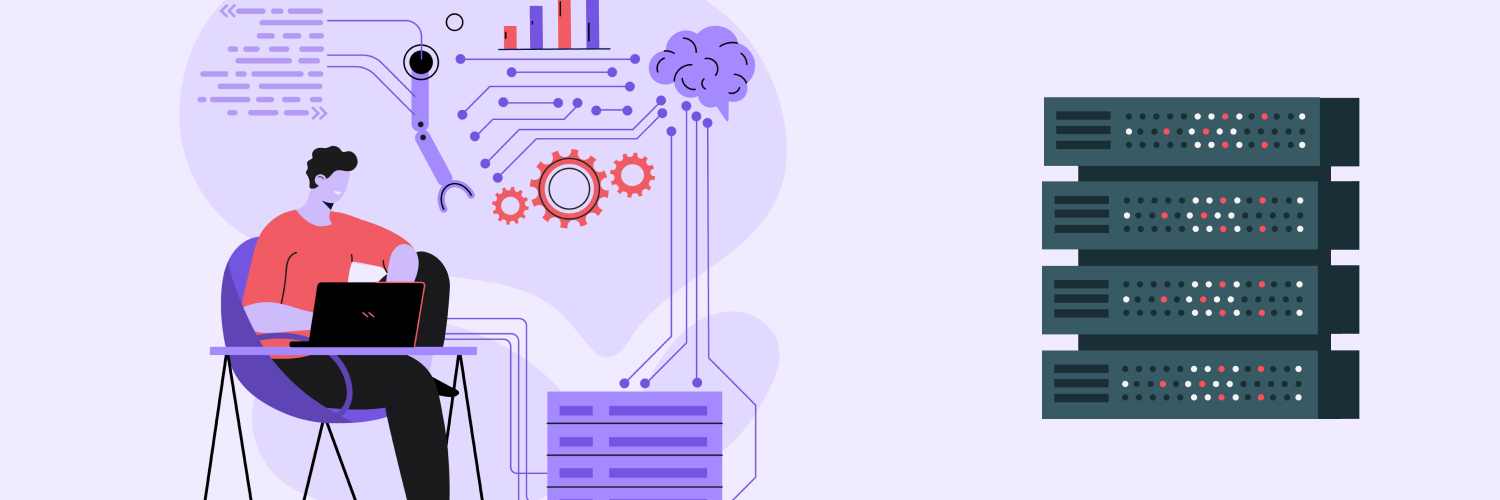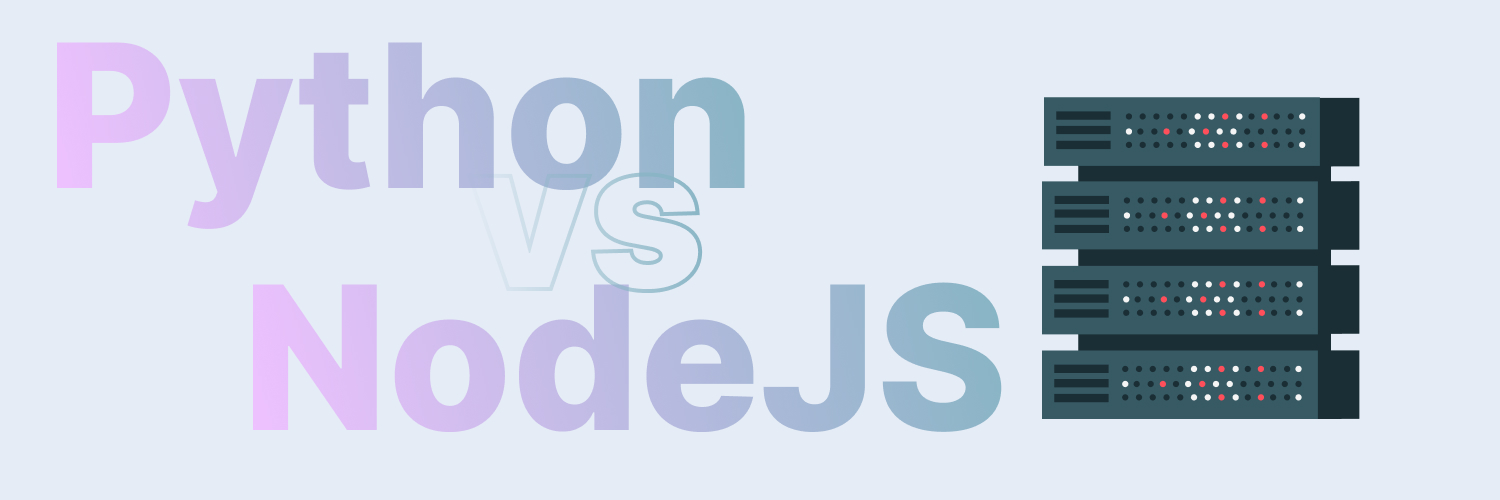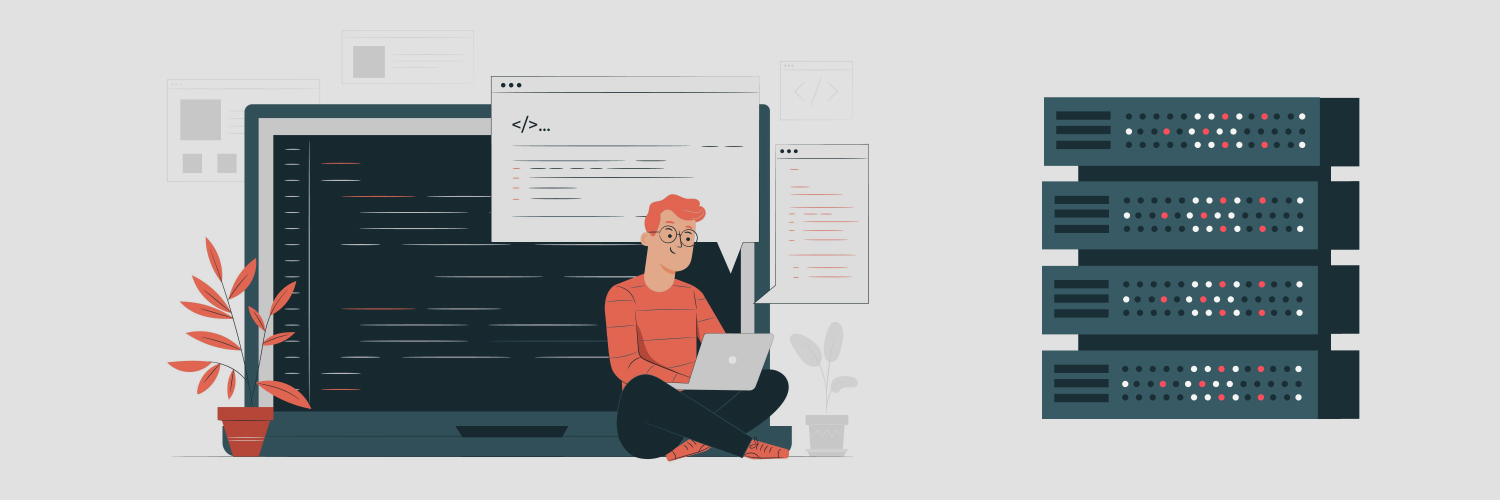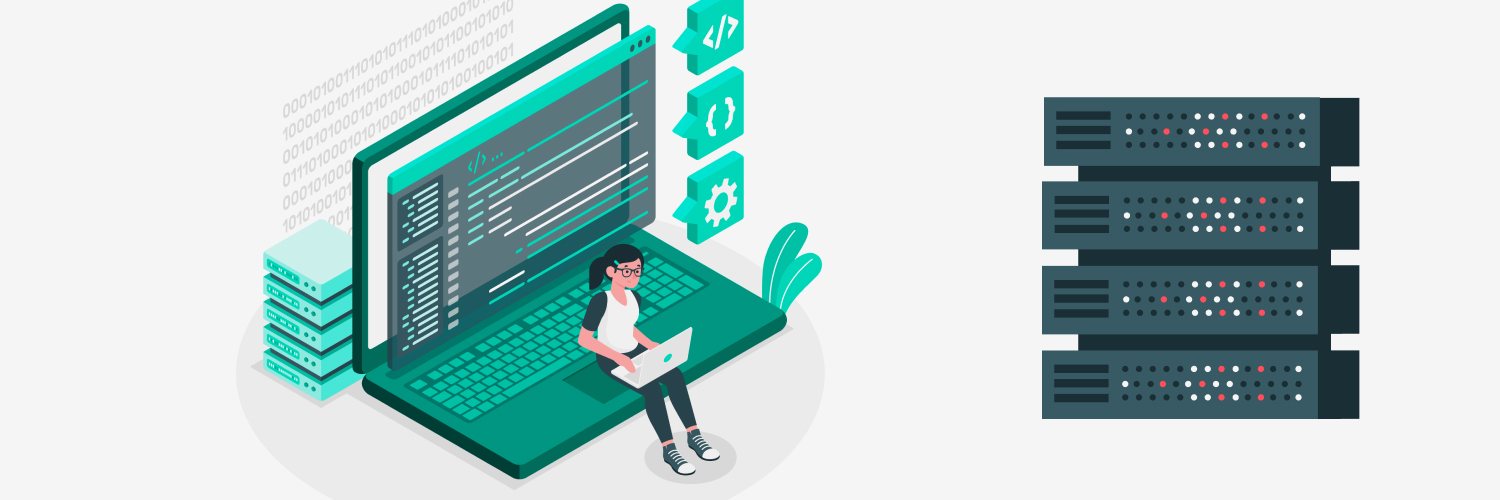Natural Language Processing And How Data Scraping Can Help You
If you’ve used Siri, Alexa, or Google voice commands — or if you’ve seen ads pop up on social media after mentioning something and are worried your phone is listening to you — then you’re already familiar with Natural Language Processing (NLP). In short, computers can now understand what you’re saying.
As our devices become more sophisticated, NLP — that is, the ability of computers to listen to the language and work out its meaning — is the future, if not already the present, of computing. This article will detail NLP and data scraping, but use this table of contents if you want to skip ahead.
Natural Language Processing: Definition and Functions

A more advanced definition of NLP is “a convergence of artificial intelligence and computational linguistics which handles interactions between machines and natural languages of humans in which computers are entailed to analyze, understand, alter, or generate natural language.”
NLP that can detect emotion and meaning in a sophisticated way, distinct from listening to keywords, is in the works. That could give it all kinds of applications, from helping individuals with disabilities communicate hands-free to seamlessly integrating computers into our lives. Natural language processing applications are vast. For example, smart home devices and voice-activated devices in cars already use natural language processing. The better the technology gets, the more frictionless these experiences will be — using the ability above to detect emotion or becoming more attuned to individual speech quirks.
Natural language processing with the ability to read sentiment could make it much easier for your TV to suggest movies you might like or serve ads that elicit the desired (and honest) response. It could have applications beyond marketing — for example, an AI-assisted NLP system could gauge the truth of a participant’s responses in medical studies. It could solve the problem of self-reported data, which is often unreliable. Making powerful computer intelligence available to all through the simplest verbal means could lead to more accurate surveys, potentially better-tailored treatments — and a world of other positive outcomes.
But even in its most basic forms, that interplay mentioned above between artificial intelligence (AI) and computational linguistics allows NLP to act as a bridge between humans and computers, making communication possible between two very different kinds of operating systems and removing the somewhat stilted communication that has so far characterized the interplay between humans and machines. AI allows NLP to constantly improve its ability to make connections and better recognize the language. At the same time, computational linguistics “is the scientific and engineering discipline concerned with understanding written and spoken language from a computational perspective, and building artifacts that usefully process and produce language, either in bulk or in a dialogue setting.”
Since language and thinking are closely connected, analyzing language can help computers “think,” changing the way people think about computation and how computers analyze language. It brings us closer to the “singularity” predicted by many philosophers of AI, in which computers and humans achieve seamless communication. This may have broad implications for humanity; it certainly changes the game for marketers.
How does natural language processing work?
NLP software breaks down utterances for keywords, which are analyzed by servers. Then, AI trains these computers to “understand” natural language and how humans talk organically to one another. Natural language is distinct from a programming language, the language that computers are taught to speak.
So instead of typing commands into a computer, Alexa (for example) records your conversation, analyzes the syntax, and further breaks it down for meaningful keywords and units of meaning (phonemes). Then, Amazon’s powerful servers can analyze those chunks of meaning to pull out commands — all of which result in Alexa playing the song you asked for or looking up the news article you wanted to read.
If you’re wondering how NLP manages to actually “learn” language, the answer is it relies on large amounts of data to continuously improve its ability to discern what’s critical in a sentence and what’s less important.
The more words and context AI has to analyze, the better. While NLP can use different software to sift through words and create meaning, they all have essentially the same goal — equivalent to children learning grammar and vocabulary by listening to others speak and absorbing how a meaningful sentence is constructed. And when it comes to NLP, that can mean using AI to break down minor speech units and construct the words being spoken.
While grammar is universal, people all use language differently and in personal ways:
- As a spoken or written language, each with slightly different rules of usage
- Literally, metaphorically, or hyperbolically
- With local idioms or expressions
- Formally or informally
At its simplest, NLP functions according to basic commands: do this, don’t do that, start playing this, stop playing that. But as voice activation software becomes increasingly well-integrated into our lives, it will have to develop ways to understand a wider variety of linguistic cues, including emotional tones, accents, and meanings. NLP has to work out the syntax of a sentence to break it down — that is, the connective grammatical tissue that allows us to make sense of a string of words.
Think about your own communications for a moment. Your friends and family probably use the same expressive tools you do, but differently. Some use longer and more formal words, and others are more conversational and slangy. Some are likely very precise, while others may use terms more loosely. They all have one thing in common: they want to be understood.
With the seemingly infinite variety of word order and sentences (and questions) humans can generate, how can AI possibly recognize all the linguistic variations? NLP relies on substantial data sets to get the sheer volume of language elements it needs. That’s where data scraping comes in. Imagine if you could listen to millions of conversations and thus discern the differences in individual usage, and determine what was unique to individuals and what was universally applicable: that’s what scraping data from websites allows you to do.
Web Scraping and Natural Language Processing

How does any company get the massive amounts of data it needs to represent its customer base accurately? Web scraping is a powerful technique for any company looking to collect large data sets.
Web scraping extracts data from websites. For example, every time you leave a comment in a chat room, fill out an online form, or otherwise engage in public aspects of online life, you leave data that can be harvested.
Best of all, this data is natural and authentic. Web users’ language is real and representative of peoples’ concerns and feelings (particularly when it comes from many users). It gives an accurate snapshot of what’s on peoples’ minds and how they express themselves. These expressions could be in the form of:
- Positive or negative reviews. Taken with large numbers of other data points, it can give a data scientist or AI bot an authentic sense of an object’s popularity, what demographic likes it best, in which territories, and so on.
- Online arguments. These offer an insight into how genuine emotions (typically anger, but also condescension, passive aggression, and many other negative emotions) are conveyed in moments of high rage.
- Humorous comments. These can shed light on social mores (i.e., what people find funny or offensive). That can shed light on what they value or the kinds of language trending as shorthand (catchphrases, web abbreviations) that tend to dominate people’s spoken language at specific cultural moments. Many of these shorthand phrases start online, then migrate to real life.
- Opinion pieces and essays. These are, of course, the actual meat of a page being analyzed and can provide insight into timely content that reflects contemporary concerns and the persuasive and likely more formal language used to convey it.
- Informational content. Even the most neutral, objective content uses linguistic techniques and strategies; a “neutral tone” is still an emotional tone achieved through language. AI can also analyze sober and “objective” language for specific cues.
- Photo captions. Many don’t think about the stuff they put online as having value, but in addition to geolocation and other hard intel for data miners, photo captions (and other seemingly negligible, smaller key language uses) also contain important emotional cues. The use of emoji, humor, and generally exuberant tones and punctuation make photo captions a rich source of material for language analysis.
- Menu and product descriptions. These can be a rich source of enticing and convincing language designed to provoke a sale or desire in a consumer.
As a thought exercise, contemplate all the uses of language online: from well-written to rapidly-composed; from calm to angry; from descriptive to highly emotional. The uses of language are many, and the more samples you have, the better your understanding of the full scope of human expression.
While data scraping can be used for any end goal requiring large amounts of data, its language NLP is after. This is gathered by bots specifically programmed to look for verbal cues. Typically, they use computer code like Python to examine the sites’ content and then save the data and store it in libraries (popular ones include BeautifulSoup and Requests) or in a CSV file.
Python is perhaps the most popular programming language on the web. It is designed for beginners and pros alike, and its open-source code is freely available. Python can be used to build tools for machine learning and websites and software, automate tasks, and analyze data, so most web scraping techniques also use Python.
Absolute beginners may find it more intimidating than coders with some experience, but there’s a world of short university courses and tutorials online for anyone motivated to learn it, as well as help pages on the Python site itself. Anyone looking to do web scraping themselves should consider getting some basic understanding of Python.
Web scraping techniques
Some specific web scraping techniques include:
- Manual copy and pasting. For those who don’t want to learn Python, the oldest and simplest way — also the most cumbersome — involves simply copying chunks of text from websites and then pasting them into spreadsheets. You can search these spreadsheets for meaningful connections or points of interest. Of course, this is a time-consuming way of scraping the web, almost like using scissors and paste. So it may not be feasible for any company looking to gather and analyze large amounts of data.
- Web scraping tools. These tools use Python to crawl through websites and extract data from them. These are faster and more reliable but could be hindered by sites using proxies and the shortcomings of analyzing data on local sites rather than operating from a cloud-based platform. There are also security and blocking issues that must be overcome to use these tools (more on these later).
- HTML parsing. This automated web scraping technique starts with the assumption that many websites have commonalities in their structure and templates and can then extract what’s different with each. It looks at the structural code of sites to find these points of departure.
- Machine learning analyses. Using AI, some bots can interpret web pages like humans do (for example, privileging information presented in a special, large graphical format). If it works, this overcomes one traditional problem with web scraping: it tends to provide every piece of information on a website with the same degree of importance. That’s not true for humans, and giving levels of significance to different pieces of data could make web scraping more effective.
- Document Object Model (DOM) parsing. This technique seeks to understand the structure of websites, representing them as a branching tree, which can then be analyzed and combed for data. This means that the entire website can be searched for meaningful language, not just the landing page or “obvious” sections.
Non-language uses of data scraping include (for example) trying to find subscribers’ email addresses, the price of goods being sold (plane tickets, for example) for comparison, finding marketing leads, and for any specific market research uses your company may have.
To make the most of data scraping’s power, you should first decide what data you’re looking for. After that comes understanding how the targeted website is structured. Knowing what you’re looking for and what sets your target site apart from others helps structure your scraper loops (the tools that continuously look for the data you’re seeking). And once you’ve worked out your code for one site, likely using a tool like the Python-based BeautifulSoup, you can expand it to comb through multiple URLs at once. This is true for language usage and plane ticket prices.
Web scraping can be an ambitious and complicated task, so very few but the most experienced coders do it themselves, even with bots and AI techniques. Most people prefer to work with a company specializing in web scraping that understands its different varieties and uses, putting to work the suitable methods for the right end goals. Rayobyte partners with Rayobyte’s Web Scraping API, an excellent scraping service with simple pricing options and the tools to get the data you want.
Rayobyte’s Web Scraping API promises no more blocks in scraping pursuits, proxy management, or browser scaling. It can evade CAPTCHAs and uses an automated process to output its findings. It’s invaluable to users and prides itself on its client focus, low prices, helpful support system, and quality product, recognizing that users need rich, relevant data.
The Need for Big Data in Natural Language Processing and How To Get It

As mentioned above, when you’re talking about NLP, you’re also talking about large reams of data, which make natural language processing possible. Google, Alexa, and others can process syntax and sentiment only by searching large reams of language. You will be able to beat out the competition in the new landscape by doing the same.
Web scraping is the best path to getting the amounts of data that will make your efforts meaningful, but, as discussed above, that means getting around the security barriers that sites put up against web scrapers. These include:
- CAPTCHA
- Honeypots (parts of a website that appear to be full of valuable information but are null or contain irrelevant or false information)
- IP blocking
- Login requirements
Web scraping bots have to play a constant game of cat and mouse with websites’ security systems, which are naturally designed to repel and block bots. By failing at CAPTCHA or making too many requests in a short period from the same IP address, a site can identify a request as coming from a bot, not a human — which can result in its IP address being blocked (not to mention all the data collected is lost).
In addition to security and prevention issues, the sheer amounts of data need to be sorted for relevance. A poorly designed web scraping tool can be blocked by sites and return irrelevant and unhelpful data. It may also return the results of only one page — that’s great if your targeted website exhibits all its data on one page only, but many use pagination to make users keep clicking through their site. Chances are, you want all the data on a site, not just its landing page. A well-designed scraper can get everything you need, but it takes care and attention to your scraper’s settings to make sure that doesn’t happen to you.
Regarding access and security problems, proxies offer a great answer. They let you get around many of these standard blocking techniques and let you scrape data without being impeded. You need a strategy for natural language processing tools and gathering data as intelligent as your approach to your actual content and website.
So here’s a word about proxies and how they may be able to help you:
All about proxies
As mentioned above, if a site identifies your requests as coming from one server, it will likely identify you as a bot and block you entirely. Proxies are server applications that are intermediaries between your server and the one you’re targeting. The use of proxies can break up complicated transactions into smaller bites — but can also help mask the origin of requests.
By masking the identity of your IP address, proxies allow you to scrape data from thousands of URLs. They’re a great way to avoid being detected as a bot and blocked from sites. Using proxies intelligently can also allow you to scrape an extensive website without it detecting parallel requests (another certain way to get shut down).
Proxies can give you anonymity and increase your security (since it’s harder to identify the initial source of requests). Proxies are also a great leveler. They allow companies of any size to take advantage of the benefits of big data and smaller firms to compete with enormous ones, truly leveling the playing field. At the same time, they can keep larger firms agile and competitive.
Scraping data can be a complicated venture for your business. Getting it wrong can cost you valuable time and data if you’re working with unreliable servers or suddenly get blocked from sites you’re targeting. You don’t want to abandon an ambitious web scraping project because you run out of bandwidth or have been blocked too often.
So what do you need in a proxy? The right proxies are:
- Fast and can handle the speed required to scrape massive amounts of data from many sites. Speeds should not be less than 1GB per second.
- Reliable, meaning they won’t crash when projects get large.
- Internationally located. Having proxies in different countries means faster access to a world of websites.
Rayobyte proxies are designed to meet the needs of businesses that rely on data to improve their services and compete in a rapidly changing and always competitive environment. They offer a range of services to help your business grow without losing profits to bans and unnecessary downtime. Rayobyte believes that proxy users deserve a company that will serve as their partner, not just their provider, and is designed to help business owners of all levels find fast, reliable, and affordable proxies.
Rayobyte either pays customers directly for the use of their residential IP address or resells residential IPs from partners who share their values. Everyone involved in their residential IP program is thoroughly vetted, and they monitor usage to ensure it’s in line with their terms. Rayobyte protects the privacy of its residential proxy providers and doesn’t collect personal information from them. You can read more about their residential proxy ethical standards here.
While proxies are immeasurably helpful when it comes to data collection, they can also help solve several other issues businesses face, including:
- Coordinating social media management is easier and nimbler when you have computing power all over the world.
- Making streaming more reliable, so there are no sudden drops in quality or other glitches with sound or video.
- Improving cybersecurity and geolocation concerns, since you’re almost impossible to trace when using a rotating system of proxies and IP addresses.
- Improving privacy is a security concern for every company in the internet age.
They can perform these functions because proxies effectively spread out your computing across an array of servers in different locations and countries. That keeps your IP address private and makes it harder for cyberattacks to target you. Proxies add computing power and reliability to your IT network, giving you the horsepower of a much larger organization.
So whether you’re looking to upgrade your proxy game or start from scratch, reach out to Rayobyte. They offer several potential solutions:
Data center proxies
Rayobyte’s data center proxies offer proxies from 27 different countries, including the U.S., the UK, Australia, China, Japan, and many other centers of global commerce (and if you need another one, you can let them know). With 300,000+ IPs, you will have access to a massive IP infrastructure that mitigates the threat of downtime with bans. If you need unlimited bandwidth and connections, and fast speeds, to process enormous amounts of data, data center proxies may be the solution you’re looking for.
ISP proxies
ISP proxies are IP addresses that are issued right from Internet Service Providers (ISPs) but housed in data centers. ISP proxies combine the authority of residential proxies with the speed of data center proxies, so you get the best of both proxy worlds. In addition, Rayobyte puts no limits on bandwidth or threads, meaning more significant savings for you! They currently offer ISP proxies from the US, UK, and Germany.
Residential proxies
Residential proxies involve using IP addresses of individual homeowners (residences) as intermediaries between the IP address making the request and the targeted website. Since they belong to residential internet users, there’s no way for targeted sites to know they’re coming from automated scraping systems. They are functionally almost indistinguishable from regular, human-like web traffic, leading to no stoppages in your data collection.
Other advantages of using residential proxies:
- Residential proxies allow you to tap into a network of millions of devices worldwide from real users, making it less likely a website will see you as a bot.
- Different websites may provide additional information depending on the region. Rayobyte’s geo-targeting functionality can allow you to be seemingly anywhere in the world.
Rayobyte only uses its residential proxies ethically, unlike some other proxy providers, with providers paid for the use of their proxies and fully aware of their participation.
Natural Language Processing, SEO, And Your Marketing Strategy

Google recognized the importance of natural language processing when it added the “BERT” algorithm to its arsenal of rapidly-changing SEO tools and algorithms. “BERT” stands for “Bidirectional Encoder Representations from Transformers.” In layman’s terms, BERT uses machine learning and NLP to better understand the context of what people are searching for when they use voice-activated searches.
With the increased prevalence of voice-activated searches, it stands to reason that SEO is changing, too. You may be aware that you use a different language when asking Alexa or any similar device to find information on a product than when you type a command into a search box. You’re also probably aware of how much your tone conveys urgency, for example. But there are nuances in tone and emotion that may be natural to you but convey multitudes you’re unaware of. Search engines and NLP software now face the challenge of understanding how to give vocally posed questions the same quality results as typed ones.
For marketers, this could have all sorts of ramifications, which can only be speculated at present. Some have suggested the following findings:
- Marketers must be very clear in their language and minimize irrelevant keywords. At the same time, keywords may evolve to feel more like natural language. Think of how casual your speech is compared to when it’s written: marketers must adapt. The practice of keyword-stuffing (cramming keywords when they’re not relevant) may be diminished, too, as that’s far from how people speak. Indeed, the way we currently understand keywords may change, as voice commands and natural language searches differ from written ones. BERN, for example, can recognize other crucial communication elements such as syntax and emotion. Syntax analysis allows search engines and AI to understand whether a sentence is well-written and relevant. Just as it would seem off if you suddenly stuffed keywords into a daily conversation to fulfill a quota, it will now seem odd to Google if you do the same in written content.
- Marketers will need to alter the language on their sites to be more conversational and direct. International marketers and multinational sites may then be at a disadvantage to local content, which feels more immediate and accessible. That could mean using better translation services or hiring local teams who can produce content that feels fresh and local (the equivalent of native advertising on social media). It may also be impossible for international businesses to surmount this obstacle since so many voice searches are for something (pizza, best haircut, friendliest dog walker) near me. According to Google, such searches have increased dramatically over the last few years. This may reshape the internet to become more of a local phenomenon (at least when it comes to goods and services).
- Sites with authentically helpful information and how-tos may rise to the top of the SEO pile. That’s because so many voice requests and commands are about finding assistance right now. While there are many reasons people prefer voice activation over typing a search request (convenience, novelty, and the desire for a frictionless experience), one is the need for rapid assistance. Voice activation has been marketed as a timesaver, and despite early hiccups, its voice recognition skills are improving. That, too, means that focused, well-written, clear communication in your website content is critical.
It seems that marketers who can create sites using natural language that’s specific, helpful, and relevant will likely do better in the age of voice activation, which is already changing the nature of SEO. But don’t fear: natural language processing and SEO go together like digital peanut butter and jelly.
How marketers can use natural language processing tools
Here’s a little natural language processing for “dummies.”
If you’re a marketer whose content takes advantage of prior trends, you may have to rewrite your offerings to fit the new SEO prerogatives shaped by NLP and voice commands.
For example, familiar styles, such as writing a recipe at the bottom of an article after a long family tale, may have to be pared down. That made sense when trying to stuff in keywords and put in more visual ad space. Now, if someone asks how to make apple pie, they probably won’t want to sit through a long lecture before getting to the recipe. Different brains may process spoken language differently from written language, and if you think back to college lectures, you probably appreciated the teachers who spoke succinctly and clearly.
In general, this could make marketers raise their game regarding writing standards. AI can tell (as customers can) if a piece of content is just a side of gibberish with some keywords thrown in. Not only that, NLP, supported by big data, can now recognize entities like images. So even those have to be carefully chosen to support the message you’re looking to convey. If it seems like an impossible task on top of everything else, don’t despair: focus on your message and what you’re trying to let consumers know. And remember that many voice-activated searches are done on phones and devices rather than laptops. That means you need to optimize your content for non-laptop devices.
It may be easier for marketers to speak this new language since it’s closer to how humans talk — you may just have to forget some of the previous lessons you acquired when trying to boost SEO rankings. Of course, a cleanly-structured website with some keywords will still be important to your marketing strategy. Hopefully, you’ll see this as liberating since it’s the closest the web has come to talking to consumers conversationally and authentically.
When considering what tone to adopt, think about talking to a friend about your product. Craft FAQs and blogs in a chatty, conversational, informative way since these will likely be relevant to the questions people ask their voice recognition devices (Siri, why is thin crust pizza better?). Natural language processing software will become ever more sophisticated, but the bottom line is that direct, honest, and authentic communication with your audience should become more easily within reach — with the right NLP natural language processing tools.
Natural Language Processing, SEO, And You: Final Words

No matter where your business is now, you surely want to take it to the next level. That means mastering SEO. But the way search works is changing, and you’ll have to adapt to these new demands to stay relevant. In the words of the Google blog post from earlier, “the challenge for marketers is to make sure you’re giving people the answers they’re looking for as quickly as possible. And the opportunity is capturing their consideration — and the sale — by doing so.”
Scraping data is crucial for mastering the new world of natural language processing and human-computer interaction, and that requires new approaches. Most of these are beyond the scope of individuals or small businesses, as natural language processing data sets are enormous, and many sites have the tools to block web and data scraping bots.
That’s all right: Rayobyte gives you all the tools to scrape data and reach your full potential. We take your data needs seriously, offering 24/7 support and custom features for those seeking more specific criteria. If you’re curious about the natural language processing web scraping connection, get in touch today. Let Rayobyte help you master the new world of NLP with the power of big data.
The information contained within this article, including information posted by official staff, guest-submitted material, message board postings, or other third-party material is presented solely for the purposes of education and furtherance of the knowledge of the reader. All trademarks used in this publication are hereby acknowledged as the property of their respective owners.






